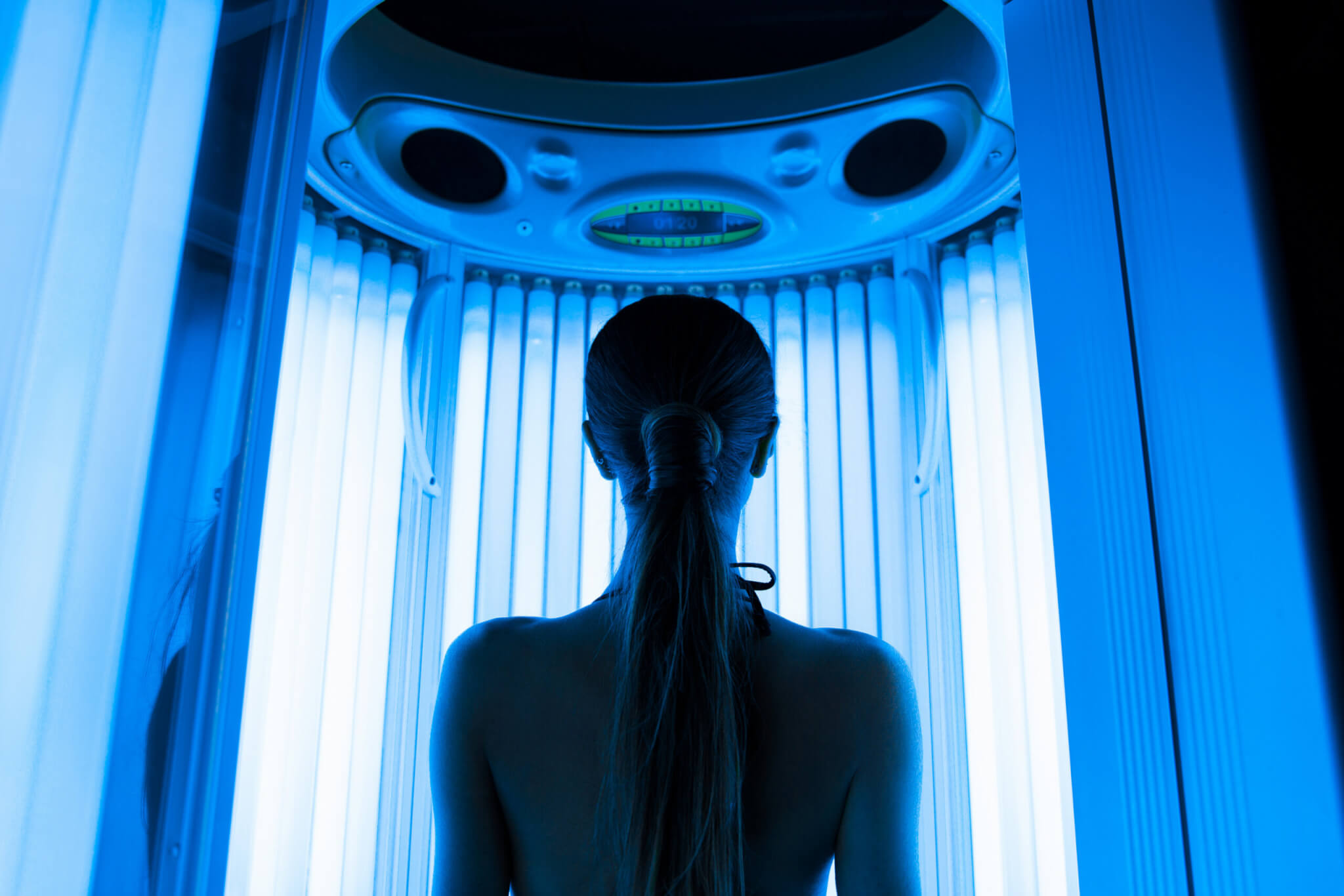Tanning has stayed consistently popular for many 40-somethings who grew up tanning, and while it seemed like the next generations would learn to protect skin from the potential risks of tanning beds, gen Z is now bringing back this trend. According to Dr. Celeste Durham of U.S. Dermatology Partners Fort Worth, “A recent American Academy of Dermatology survey showed that 28% of gen Z respondents cared more about tanning than skin cancer prevention. They also prioritized time in the sun and tanned skin over healthy skin. These problematic beliefs about the beauty of tanned skin are sending gen Z down the path to the same skin cancer and skin health risks now facing gen X and older millennials who grew up visiting tanning beds. This means educating people on the danger of tanning is increasingly more important for dermatologists.” In this blog, Dr. Durham discusses the increasing popularity of tanning beds, the many dangers of tanning beds, and safer, skin-friendly tanning bed alternatives.
Why Are Tanning Beds Popular Among Gen Z and Over 40s?
The use of tanning beds is on the rise with Gen Z (people born between 1997 and 2013), and it remains popular with people over 40 who grew up tanning. According to Dr. Durham, “Gen Z loves skincare. They are always trying skincare trends and looking to improve their routines. That’s why it’s so shocking that they seem to have forgotten that skin cancer risk and accelerated skin aging has increased among those who used tanning beds. Not to mention the fact that people who have been tanning for years, know the risks, and even see others who develop skin health issues because of tanning, keep going back. Others keep visiting tanning beds because they believe being tan will give them a certain status or popularity among their peers. Research out of Georgetown University in 2017 indicated that tanning may even be addictive. Specifically, they found that younger women commonly developed symptoms that indicated tanning dependence. Whatever the reason for tanning, it’s important for people to understand tanning bed risks.”
The Science Behind Tanning Beds
Tanning beds are so dangerous because of how they tan skin. Tanning beds use lamps or bulbs that produce UV radiation that mimics the sun’s UVA and UVB rays. However, the radiation levels emitted by tanning beds is often 4x higher than those produced by the sun at noon. Many people justify visiting tanning beds because they believe it increases the body’s vitamin D levels, but this isn’t the case. Vitamin D is produced by the skin through exposure to UVB rays. Tanning beds utilize almost entirely UVA rays. This type of UV ray doesn’t increase vitamin D production, but it does penetrate the deep layers of skin, causing cellular damage. In the short-term, exposure to the intense UVA rays produced by tanning beds leads to sunburns as well as tans. Additionally, tanning beds dry skin out, leading to cracking, flaking, and uneven skin tone and texture. Tanning beds also reduce collagen and this leads to sagging, decreased elasticity and increase in wrinkles.
Long-Term Consequences of Tanning Bed Use
Many people think that tanning makes skin look attractive, and this may be true in the short term. However, the long-term repercussions of tanning far outweigh the short-term benefits. Some of the long-term consequences of tanning bed use include:
- Accelerated aging – some people seek out tanning for the cosmetic benefits, but it’s well known that frequent tanning leaves skin looking older. Skin dehydration and cellular damage cause wrinkled, saggy, and hyperpigmented skin. We’ve all seen an older person who frequented tanning beds with skin that looked leathery and rough.
- Skin Cancer – damage from UVA and UVB rays from the sun or tanning beds can damage skin, leading to the development of skin cancers. Indoor tanning statistics reported by the American Academy of Dermatology indicate that using tanning beds increases squamous cell carcinoma risk by 58%, basal cell carcinoma risk by 24%, and for those who start tanning under the age of 20, melanoma risk increases 47% EVERYTIME the individual uses a tanning bed. Melanoma is the deadliest form of skin cancer. Treatment of this and other types of skin cancer can lead to permanent disfigurement, scarring, and in some cases death.
- Immune suppression – frequent exposure to radiation from tanning beds suppresses the immune system and leads to diminished ability to protect against infection and disease, reduced efficacy of immunizations, and other serious health concerns. It also reduces the immune systems ability to find and repair precancerous change in the skin.
- Eye damage – sunburn of the cornea, cataracts, and other forms of eye damage can occur after exposure to the intense lights utilized in tanning bed lamps.
Alternatives to Tanning Beds
When it comes to indoor tanning, Dr. Durham reminds patients, “You can achieve the aesthetic results you want without setting foot in the sun or scheduling a session in a tanning bed. Today’s self-tanners, when applied correctly, look natural and are completely sun safe. Many self-tanners even have built-in sunscreen to give you a sun kissed look and prevent damage. For a less extreme change, bronzing lotions and creams give skin a healthy glow without sun exposure. Spray tans have also come a long way and the right shade delivers tanned skin without the reddish-orange tint. Don’t expose yourself to potential short and long-term skin health risks for a temporary boost in self-confidence. Instead, learn your options for skin-friendly sunless tanning and feel your best while protecting skin.”
Keep Your Skin Healthy, Beautiful & Sun Safe
According to Dr. Durham, “Tanning in the sun outdoors or using tanning beds leads to numerous risks, including increased susceptibility for skin cancer and accelerated skin aging. There’s nothing beautiful about skin damaged by tanning beds. It’s time to flip the script on this beauty trend and start spreading the facts about just how dangerous tanning is for our skin and the negative effects it has on the appearance of skin in the long run. Keeping skin beautiful means protecting against sun damage at every age.”
Schedule a Consultation
Whether you’ve been visiting a tanning bed for decades, you’ve only been a few times, or you’re considering scheduling a tanning session, we hope you’ll consult with a knowledgeable dermatologist instead. If you’ve had one or more sunburns or frequently visited tanning beds, you are at an increased risk for skin cancer, so it’s essential that you receive an annual skin cancer screening from a professional dermatologist. If you’d like to schedule a skin cancer exam or visit with a board certified dermatologist about any other skin health concerns, reach out to the U.S. Dermatology Partners team by completing our online request form. We look forward to hearing from you soon.
Find a location near me
or


